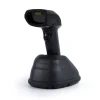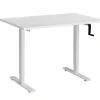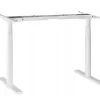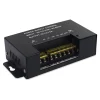Help Center: Car Cameras and Dashcams
What useful features should a car camera have?
When choosing a dashcam, it is worth paying attention to the features offered by the device. Above all, the camera should have a G-sensor safety feature. This sensor offers four levels of sensitivity and detects shocks caused by collisions or when the car brakes abruptly. Upon detecting such an event, the device automatically saves the current video recording and protects it from being overwritten and deleted. Car cameras usually have a loop recording feature, where the newest video is saved over the oldest one. This helps to save space on the card and eliminates the risk of running out of space during a dangerous road situation. Therefore, automatic protection of recordings from deletion is crucial. The Parking Mode also deserves attention; it automatically starts recording a short video when it detects a slight shock while the vehicle is parked. This can help identify the perpetrator of any potential parking damage. Other useful features include automatic start and motion detection.
Which car camera should you choose?
There is a wide range of various types of dashcams on the market. The choice depends on the individual preferences of the user and the way the device is used. For example, a camera offering dual lenses, allowing for simultaneous recording of the route in front of the vehicle and inside the vehicle, is ideal for taxi drivers. This solution enhances safety and gives the driver a view of what is happening inside the car behind them. In addition to standard cameras that record events in front of the vehicle, there are also dashcams available that include a rear camera. This allows recording what happens behind the vehicle, and in some cases, this camera can be used as a backup camera. There are also cameras that are mounted on the rearview mirror, which helps save space inside the vehicle. This ensures that visibility is not compromised.
50 or 60 Hz - which frequency to choose in the camera?
When browsing the car camera menu, each device allows you to choose between two frequencies – 50 and 60 Hz. Before we answer which frequency is appropriate, we must delve into one of the mediums, without which functioning in today’s times is almost impossible. Of course, we’re talking about electricity. Currently, in Europe, the Continental European Power System is responsible for electricity supply, which is the world’s largest synchronized electric power transmission system, including electric grids from 25 countries. Here we reach the crucial point – the entire system generates electricity at 230V and 50 Hz frequency. This is the standard frequency used by many electrical devices. Regardless of the region we are in – our homes, apartments, restaurants, or even outdoors – all electrical devices use the same current at a frequency of 50 Hz. And it is this frequency that we should use in our car cameras. So why is there an option to choose a frequency in dashcams? 60 Hz is used in individual countries, such as the United States, Canada, Brazil, etc., and this option was introduced with them in mind. So what happens if we set the frequency to 60 Hz in our car camera? Seemingly nothing bad will happen, and it won’t damage the equipment, but especially in night recordings, it may cause street lights, traffic signals, etc., to appear to flicker. To get rid of this effect, you should set the camera’s frequency to match the electricity frequency of the country.
Does the car camera record with the engine off?
No, usually car cameras do not continuously record with the engine off, as they require electrical power supplied by the vehicle’s battery. If the engine is off and the car is not connected to an external power source, the car camera will not operate or record. Therefore, a helpful feature is the parking mode, which allows the camera to automatically turn on and start recording a short clip when it detects a shock, facilitating the identification of the perpetrator of any damage. Parking mode works even when the car’s engine is off, as it consumes minimal power.










